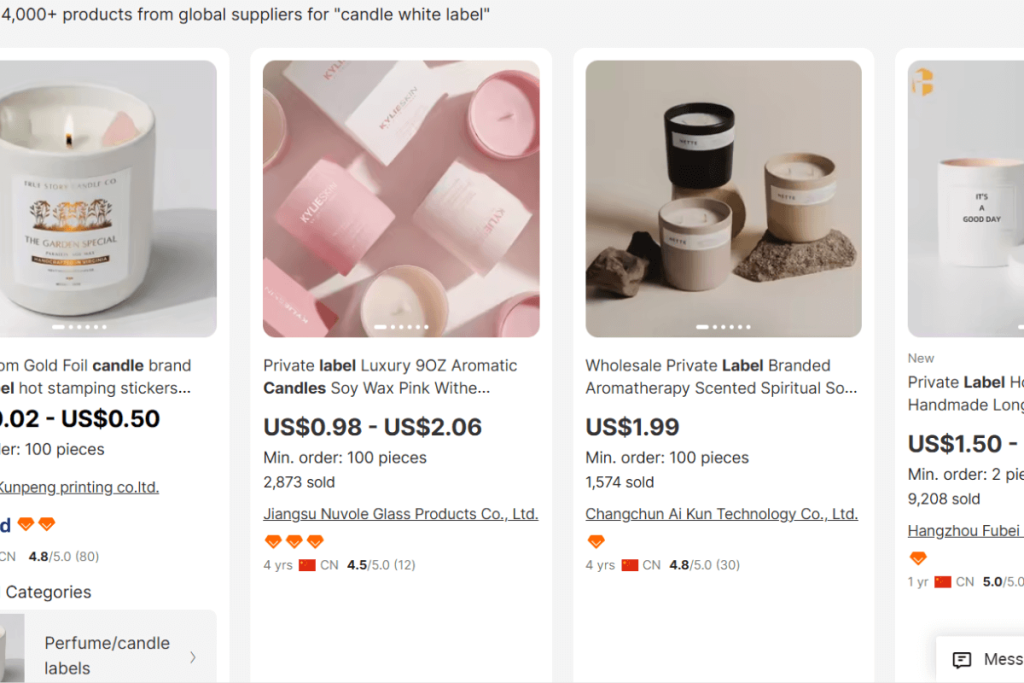Have you ever felt overwhelmed trying to find the best products to stock your store?
We’ve all been there!
Whether you’re just starting out or you’re a seasoned pro looking to expand your inventory, finding reliable suppliers and quality products can be quite the adventure.
In this guide, we’ll walk you through the ins and outs of sourcing for resellers, sharing tips, tricks, and insights to help you navigate this important aspect of your business. We’ll cover everything from identifying the best suppliers and negotiating deals to understanding trends and managing your inventory.
Why Should You Focus on Effective Inventory Sourcing?
Sourcing inventory is the process of finding the right products to stock your online store.
It’s all about figuring out what products you need, finding good suppliers to provide them, and making sure you get them at reasonable prices. This means hunting down the best deals and suppliers to keep your shelves stocked and your customers happy.
Sourcing your inventory is the foundation of your business. Think about it – you need to be able to meet demand without overstocking or running out of popular items for a successful reselling business.
Here’s why getting inventory sourcing right is so important:
It can save you money

Finding cost-effective suppliers and negotiating better deals can save you a ton of money. Imagine cutting down on expenses without skimping on quality – that’s extra cash in your pocket to invest back into your reselling business. Plus, you will be able to maintain healthy profit margins, which will boost your profits in the long run.
It might mean better product quality
The goal of effective sourcing is to do so from reliable suppliers that can provide you with a consistent flow of high-quality products. High-quality products make a massive difference in your business. It means fewer returns and complaints, saving you time and money. Happy customers mean glowing reviews, repeat business, and a steady stream of new buyers from word-of-mouth recommendations.
It gives you a competitive edge
Imagine having items that no one else in your niche is selling or getting your hands on the hottest products before everyone else does. This not only sets you apart from the competition but also makes your store the go-to place for those must-have items.
When you offer something special or in high demand, customers are more likely to choose you over other online stores. This gives you a serious edge in a crowded market, making it easier to attract and retain customers.
Online Sourcing vs. In-Person Sourcing
Before we dive into the ins and outs of sourcing for resellers, you need to choose the method that best meets your inventory needs.
Online sourcing
Sourcing inventory online is both efficient and convenient. And that’s the very reason it is so popular as a method to obtain inventory amongst ecommerce sellers.
You can shop for products from around the world right from the comfort of your home. Online marketplaces let you compare prices, read reviews, and place orders with just a few clicks.
You get access to way more options than you could ever meet in person, including liquidation and wholesale companies. These offer great deals on bulk purchases, letting you snag products at rock-bottom prices.
Plus, sourcing online is super fast – you can contact suppliers and get quotes in no time!
Advantages
- Convenient: Shop for products and suppliers anytime, anywhere, without leaving your house.
- Lots of options: Access a diverse range of suppliers and products from all over the world.
- Quick and easy: Compare prices, read reviews, and place orders with just a few clicks.
- Fast quotes: Get in touch with suppliers and get quotes way quicker than setting up in-person meetings.
Drawbacks
- Quality: Hard to know the quality of products until they show up at your door.
- Trust issues: Tricky to figure out if a supplier is reliable without meeting them in person.
- Less personal: Building a strong relationship with suppliers can be tough without face-to-face interactions.
- Scam risk: Higher chance of running into shady suppliers or deals.
In-person sourcing
In-person sourcing is all about visiting suppliers, checking out trade shows, local retail stores, thrift stores, or other places where you can actually touch and feel the products. This gives you a much better idea of their quality.
Face-to-face meetings can also help you build stronger, more personal relationships with suppliers, which can lead to better deals and more reliable partnerships. You can negotiate on the spot and see the supplier’s reactions.
Advantages
- Quality check: You can see and touch products to make sure they’re up to your standards.
- Better relationships: Face-to-face meetings help build stronger, more personal connections with suppliers.
- Instant deals: Negotiate terms and deals on the spot and see how suppliers react.
- Special deals: Get access to exclusive deals and unique products that might not be online.
Drawbacks:
- Time-consuming: Takes a lot of time, especially if you have to travel.
- Costly: Travel expenses and time away from your business can add up.
- Limited options: You’re stuck with the suppliers you can physically visit, which might mean fewer choices.
- Less efficient: Finding and visiting multiple suppliers takes more effort and time compared to browsing online.
Why not both?
Not sure which sourcing method is the right one for you? Not to worry!
A lot of successful resellers mix both methods. They start with online research to find potential suppliers and then set up in-person meetings to seal the deal and check out the products. This way, they get the convenience and variety of online sourcing plus the trust and quality assurance of in-person interactions.
Different Ways to Source Inventory
Whether you decide to source inventory online or in person, there are several methods you can use:
Retail arbitrage

Retail arbitrage is when you buy products from retail stores at a low price and then sell them at a higher price to make a profit.
You basically find those awesome clearance items, discounts, or limited-time sales, purchase them, and then resell them for more than what you paid. It’s a popular strategy among resellers because it can be very profitable if you know what to look for and where to find it.
Where to source the products:
- Big box stores: Places like Walmart, Target, and Costco are goldmines for retail arbitrage. They often have clearance sections and seasonal sales where you can score products at a fraction of the original price.
- Discount stores: Stores like TJ Maxx, Marshalls, and Ross carry brand-name items at lower prices. You can find everything from clothing to home goods.
- Thrift stores: Goodwill, Salvation Army, or any local thrift store can be great for finding unique items, especially vintage or hard-to-find products.
- Outlet stores: Brand-specific outlet stores often have sales and discounts on overstocked or out-of-season items.
- Online retailers: Don’t forget about online shopping. Websites like eBay, Amazon, and any other online marketplace sometimes offer great deals you can capitalize on.
BONUS: Don’t forget Facebook Marketplace! Thousands of Facebook groups are ideal for online sourcing.
Pros:
- Low startup costs: You don’t need a lot of money to get started. You can begin with just a few items and reinvest your profits.
- Quick turnaround: You can often sell products quickly, especially if you find items that are in high demand.
- Flexibility: You can do this on your own schedule, whether it’s a side hustle or your main gig.
- No need for a supplier: Since you’re buying directly from retail stores, you don’t have to deal with suppliers or manufacturers.
Cons:
- Time-consuming: It takes time to hunt for the best deals and check multiple stores or websites.
- Inconsistent inventory: You might not always find products at a price that allows for a good profit margin. It can be hit or miss.
- Competition: Lots of people are doing this, so you might face stiff competition, especially on popular platforms like Amazon.
- Platform fees: Selling on platforms like Depop, Poshmark, or eBay comes with fees, which can eat into your profits.
- Market fluctuations: Prices and demand can change quickly, so what’s hot today might not be tomorrow.
Liquidation and wholesale companies

Liquidation and wholesale companies sell products in bulk at super low prices, usually because the items are overstocked, returned, or the company is closing out.
Liquidation companies specialize in selling these goods off quickly, often at a fraction of the retail price.
Wholesale companies, on the other hand, buy products in bulk from manufacturers and sell them to retailers or resellers at a lower cost per unit than what you’d pay at retail.
Where to source the products:
- Online liquidation marketplaces: Websites like Liquidation.com, B-Stock, and Direct Liquidation offer a wide variety of products from electronics to apparel, all available for bidding or purchase.
- Wholesale marketplaces: Platforms like Alibaba, SaleHoo, and Global Sources connect you with manufacturers and wholesalers around the world. You can buy anything from gadgets to home goods.
- Warehouse sales: Sometimes companies will have physical warehouse sales where they clear out inventory at steep discounts.
- Local liquidators: Check out local liquidation warehouses in your area. They often have sales that aren’t advertised online.
- Trade shows: These events can be a great way to meet wholesalers and liquidation companies, see products in person, and negotiate deals.
Pros:
- Lower costs: Buying in bulk from these companies means you get products at a much lower price per unit, which can significantly boost your profit margins.
- Variety: There’s a huge range of products available, so you can diversify your inventory without breaking the bank.
- High inventory levels: You can purchase large quantities, ensuring you have enough stock to meet customer demand.
- Potential for high profits: With the low purchase prices, even modest sales prices can yield significant profits.
Cons:
- Upfront investment: You usually need more money upfront to buy in bulk, which can be a barrier if you’re just starting out.
- Storage needs: Buying in bulk means you need space to store your inventory, which can be an issue if you don’t have a lot of storage room.
- Quality variability: With liquidation goods, the quality can sometimes be inconsistent, especially with returned or overstock items.
- Risk of unsellable items: There’s always a risk that some items won’t sell, which means you could end up with dead stock.
Dropshipping
Dropshipping is like running a store without ever having to stock any products yourself.
Here’s how it works: You set up an online store and list products for sale. When a customer makes a purchase, you buy the product from a third-party supplier, who then ships it directly to the customer.
You never have to handle the product. Your profit comes from the difference between what you charge the customer and what you pay the supplier. It’s a popular model because it’s low-risk and low-investment.
Where to source the products:
- Online marketplaces: Websites like AliExpress, Oberlo, and Spocket are go-to sources for finding dropshipping suppliers. They offer a wide variety of products at different price points.
- Dropshipping platforms: Platforms like Shopify and WooCommerce have integrations with dropshipping services, making it easy to add products to your store.
- Supplier directories: Directories like SaleHoo and Worldwide Brands list verified dropshipping suppliers across various industries.
- Niche suppliers: Sometimes, finding specialized dropshipping suppliers in your niche can offer unique products that aren’t widely available, giving you an edge.
Pros:
- Low startup costs: You don’t need to invest heavily in inventory upfront. You only purchase products after a customer orders them.
- No inventory management: Since you don’t stock products, you don’t have to worry about storage space or managing inventory.
- Wide product range: You can offer a vast array of products without worrying about storage or upfront costs. If something isn’t selling, you can easily switch to new products.
- Flexibility: You can run your dropshipping business from anywhere, as long as you have an internet connection. It’s perfect for digital nomads or those who want the freedom to work from anywhere.
Cons:
- Lower profit margins: Since you’re buying products at retail prices, your profit margins can be thinner compared to buying in bulk from wholesalers.
- Quality control issues: You have less control over product quality and shipping times, which can lead to customer dissatisfaction if the supplier doesn’t meet expectations.
- Reliance on suppliers: Your business relies heavily on the reliability of your suppliers. If they run out of stock or delay shipping, it directly affects your customers.
- Customer service challenges: Since you’re not handling the products, resolving customer service issues can be more complicated. You have to communicate with the supplier to handle returns, exchanges, or any product issues.
White label & Private label

White label and private label are about putting your brand on generic products.
With white labeling, you take a product that’s already being produced and add your branding to it.
Private labeling goes a step further – you work with a manufacturer to create a product to your specifications, and then it gets branded as your own.
Both methods allow you to sell products that look and feel unique to your brand, without having to create them from scratch.
Where to source the products:
- Online marketplaces: Websites like Alibaba and Global Sources are great places to find manufacturers who offer white label and private label services.
- Trade shows: Attending trade shows can help you meet manufacturers in person, see product samples, and discuss customization options.
- Supplier directories: Directories like SaleHoo and ThomasNet list verified manufacturers who can create white label and private label products.
- Industry networks: Networking with other business owners in your industry can lead to recommendations for reliable manufacturers.
Pros:
- Brand identity: Selling products under your brand strengthens your brand identity and makes your store stand out. Customers associate the products directly with your brand.
- Product customization: With private labeling, you can tweak the product to better fit your market’s needs, adding features or changes that differentiate it from competitors.
- Customer loyalty: Unique products that carry your brand can help build customer loyalty. When customers love your products, they’re more likely to become repeat buyers.
- Control over quality: You can set your quality standards and work closely with manufacturers to ensure products meet those standards, leading to higher customer satisfaction.
Cons:
- Higher upfront costs: Developing and ordering customized products usually require a larger initial investment than simply buying wholesale or dropshipping.
- Longer lead times: It can take time to develop and produce customized products, meaning longer lead times compared to sourcing ready-made items.
- Minimum order quantities: Many manufacturers require you to order a minimum number of units, which can be risky if you’re not sure how well the product will sell.
8 Tips to Help You Source Inventory Like a Pro
Knowing where to find inventory is just the first step, but many resellers still find it tricky to source effectively.
Take a look at these 8 tips to help you nail the process:
1. Use automation software
Managing your inventory is a tedious and time-consuming process, especially as demand grows.
Automation tools can save you tons of time and help you manage your inventory sourcing more efficiently.
SellerAider offers great crosslisting tools to help you streamline your entire sourcing process.
It helps you crosslist products across multiple marketplaces, manage your listings, and even automate tasks like relisting and delisting items. This means you can keep your inventory up-to-date across platforms like eBay, Etsy, and Poshmark without manually copying and pasting details.
Plus, it optimizes your listings for search algorithms, boosting visibility and sales!
Learn more about the features of Crosslister here.
2. Do market research
Before diving into sourcing, spend time researching what products are in demand. Start by using tools like Google Trends, Jungle Scout, and Helium 10 to identify what products are currently trending and have high demand.
Social media platforms like Instagram, TikTok, and Pinterest can also provide insights into what’s hot right now.
Check out popular ecommerce sites like Amazon, eBay, and Etsy to see what’s selling well and read customer reviews to understand what people like and don’t like about existing products.
3. Don’t be afraid to negotiate
Negotiation is key to getting the best deals.
Don’t be shy about asking for discounts, better payment terms, or lower minimum order quantities.
Suppliers often expect negotiations and are prepared to offer better terms to secure your business, especially if you plan to order regularly or in large quantities.
Remember, the worst they can say is no, and the best is that you secure a much better deal!
4. Keep up with market trends
Staying updated on market trends is essential for sourcing the right inventory.
Follow industry news, subscribe to newsletters, and join relevant online communities. Platforms like Trend Hunter, Statista, and Mintel can provide valuable insights into emerging trends and consumer behavior.
Social media and influencer marketing can also give you a pulse on what’s trending. By keeping an eye on these trends, you can adjust your inventory strategy to meet changing demands and stay ahead of the competition.
5. Consider the logistics
Factor in shipping costs, delivery times, and any potential customs issues if you’re sourcing internationally. Choose reliable shipping partners and consider using fulfillment services to streamline the process.
Good logistics planning can save you money, prevent delays, and ensure your customers receive their orders on time.
6. Compare prices
Don’t settle for the first supplier you find. Take the time to compare prices from multiple sources, including domestic and international suppliers, online marketplaces, and wholesale distributors.
Tools like Alibaba, SaleHoo, and even Google Shopping can help you see a range of prices for similar products. Comparing prices ensures you get the best deal and helps you understand the market value of the items you’re sourcing.
Look out for hidden costs like shipping, taxes, and import duties, which can affect the overall price.
7. Order samples
Always order samples before committing to a large purchase.
This small investment can save you from bigger headaches down the line. You’ll get a feel for the materials, craftsmanship, and overall quality. It also gives you the chance to test the product’s appeal with a small segment of your market before going all in.
By doing this, you avoid the risk of ending up with a large stock of unsellable items.
8. Use affiliate codes
Take advantage of affiliate codes and referral programs to get discounts and special deals from suppliers.
Reach out to other resellers in online communities, forums, or social media groups and ask if they have affiliate codes or referral links for suppliers they use. These codes often provide discounts and can help you save money on sourcing.
FAQ
1. What is inventory sourcing for resellers?
Inventory sourcing involves finding reliable suppliers and cost-effective products to stock your online store, balancing demand and supply to avoid overstocking or shortages.
2. Should I source inventory online or in-person?
Both methods have advantages. Online sourcing offers convenience and variety, while in-person sourcing provides better quality checks and supplier relationships. A combination of both is often recommended.
3. What are common methods for sourcing products?
Common methods include retail arbitrage, liquidation and wholesale companies, dropshipping, and private or white labeling.
4. What are the risks of online sourcing?
Online sourcing may involve quality control issues, trust concerns, and potential scams without face-to-face interactions.
5. How can I ensure product quality before buying?
Order samples before large purchases to test product quality, and use trusted platforms or suppliers with verified reviews.
Start Sourcing Smarter!
Sourcing doesn’t have to be a headache!
With the right strategies and tools, you can turn it into a smooth, efficient part of your reselling business that drives success. Just make sure to follow the tips and tricks we have shared in this guide!
Crosslister by SellerAideris the perfect tool to help you save time and stay organized. Whether it’s crosslisting products, managing your inventory, or automating repetitive tasks, Crosslister is a must-have for any reseller.
Curious to find out more? Give SellerAider a try for free today!

